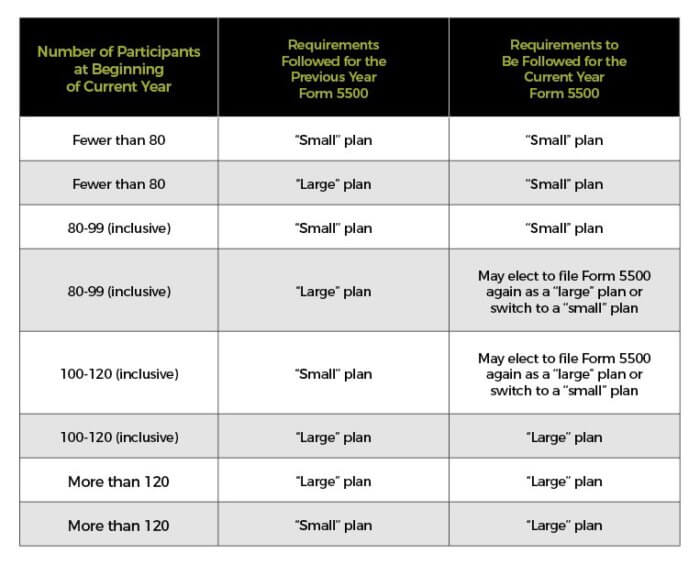
November 15, 2018

The rules and regulations surrounding the administration of 401(k) and other retirement plans can often be complex and confusing. Plan administrators need to ensure they are following the framework outlined in the plan documents while adhering to the broader regulations required by the IRS and Department of Labor (DOL). A key consideration many growing plans need to carefully consider is when they are required to receive an independent audit of the plan’s financial statements, also known as a benefit plan audit. The IRS requires that a plan with 100 or more participants (classified as a large plan) undergo an annual plan audit. However, as in the case with most things in life, there is an exception to this requirement known as the 80/120 rule. To help clients, prospects and others understand the rule and how it applies to their situation, Wilson Lewis has provided a summary of key details below.
It is a rule that permits plans with between 80 and 120 eligible participants on the first day of the plan year to file as a small plan (less than 100 participants) if they filed as a small plan in the previous year. This means that a plan with 85 participants in year one and 110 in the following year is exempt from the annual audit requirement even though they exceed the IRS requirement mentioned above. In order to understand if your plan qualifies to take advantage of the rule, it’s essential to clearly identify the total number of participants in the plan.
Eligible participants are those individuals that qualify to participate in a 401(k) or other retirement plan and are not limited to only those who choose to participate. While there are many types of eligible participants the most common include active participants, retirees receiving benefits, separated employees and beneficiaries. Below is a brief explanation of each participant type.
Below is a chart containing key information under what circumstances a plan can take advantage of the 80/120 rule.

Contact Us
The first time a 401(k) plan is required to have an audit can be a challenge for a company especially if the team has no prior experience with plan audits. The good news is you may be able to avoid an audit if your situation meets the criteria for the 80/120 rule. If you have questions about the rule or need assistance with your 401(k) or benefit plan audit, Wilson Lewis can help! For additional information call us at 770-476-1004 or click here to contact us. We look forward to speaking with you soon.